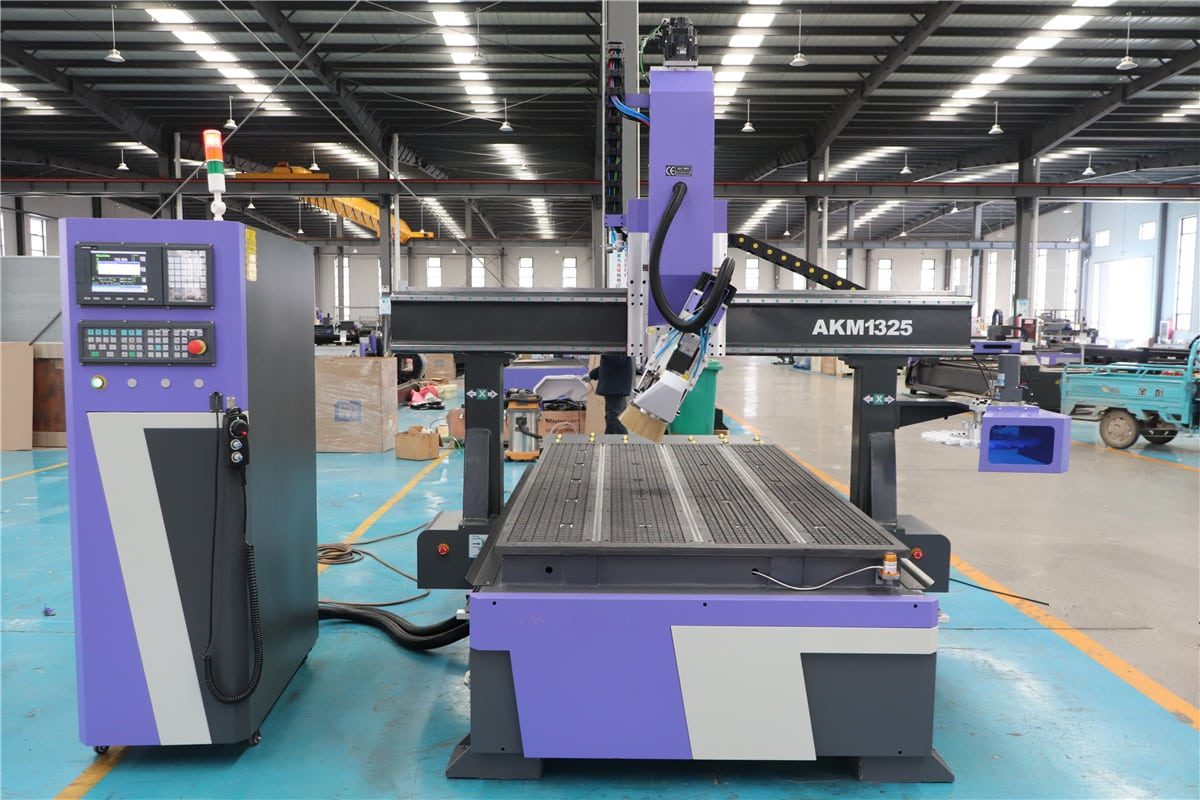A CNC router operates based on numerical control, where computer programs dictate the movement and actions of the machine. These programs, often in the form of G-code, are generated through CAD (Computer-Aided Design) and CAM (Computer-Aided Manufacturing) software. The CNC router interprets these instructions to execute precise cutting, milling, and carving operations. Here is a general step on how to set up a CNC router.
Preparing the Workspace
Workspace Layout: Ensure that the workspace is spacious enough to accommodate the CNC router and provide ample room for the operator to maneuver comfortably. The layout should allow easy access to the machine's control panel, tool change area, and material loading zone.
Environmental Considerations: Provide proper ventilation to disperse any dust or fumes generated during machining. Adequate lighting is crucial for visibility, and maintaining a clean, organized environment contributes to both safety and efficiency.
Unboxing and Assembling the CNC Router
Unpacking Inspection: Upon receiving the CNC router, carefully unbox and inspect its components. Follow the manufacturer's instructions for assembling the machine.
Gantry Assembly: Assemble the gantry, ensuring that all components fit securely. Pay attention to alignment and use the provided tools and hardware.
Motor Installation: Install the motors and ensure they are correctly connected to the corresponding axes. Follow the wiring diagrams provided by the manufacturer.
Table Setup: Set up the machine bed or table, ensuring it is level and stable. Flat surfaces help ensure the accuracy of CNC machining.
Electrical Connections
Power Supply: Connect the CNC router to a stable power source, adhering to the specified electrical requirements. Ensure that the power supply is grounded for safety.
Motor Wiring: Connect the motors according to the wiring diagrams provided by the manufacturer. Pay attention to the correct wiring sequence and ensure a secure connection.
Machine Calibration
Homing: Initiate the homing process to establish the machine's starting position. The CNC router will move to predefined reference points for each axis.
Steps per Unit Calibration: Calibrate the steps per unit for each axis to ensure precise movement. This step involves adjusting the number of motor steps required to move the machine a specific distance.
Tool Setup and Height Calibration
Tool Selection: Choose the appropriate cutting tools based on the type of material and machining operations. Install the tools securely in the tool holders.
Workholding Devices: Securely fasten the material to be machined using suitable workholding devices such as clamps, vises, or vacuum tables. Ensure proper alignment and stability.
Tool Height Calibration: Calibrate the height of the cutting tool to the material surface. This ensures accurate machining depth. Depending on the CNC router model, tool height calibration can be done manually or with automatic tool height sensors.
CNC Software Installation and Configuration
Software Installation: Install the CNC control software on the designated computer or control panel. Follow the installation instructions provided by the manufacturer.
Software Configuration: Configure the software settings, including machine parameters, axis limits, and any specific features of your CNC router. Ensure compatibility between the CNC router and the G-code instructions generated by your CAM software.
Toolpath Programming and Verification
Create or Import CNC Programs (G-code): Use CAD/CAM software to create or import CNC programs (G-code) based on your design. Define toolpaths, cutting parameters, and any additional instructions necessary for your machining operations.
Verify Toolpaths Through Simulation: Utilize toolpath simulation features in your CAD/CAM software to verify the CNC program before running it on the actual machine. Check for potential collisions or errors in the simulation. Make adjustments as needed to ensure the CNC program aligns with your design.
These are the general steps on how to set up a CNC router. By following these steps and consulting the specific guidelines provided by the CNC router manufacturer, you can ensure a successful setup and optimize the performance of your CNC router for accurate and efficient machining.

Comments on “How To Set Up a CNC Router?”